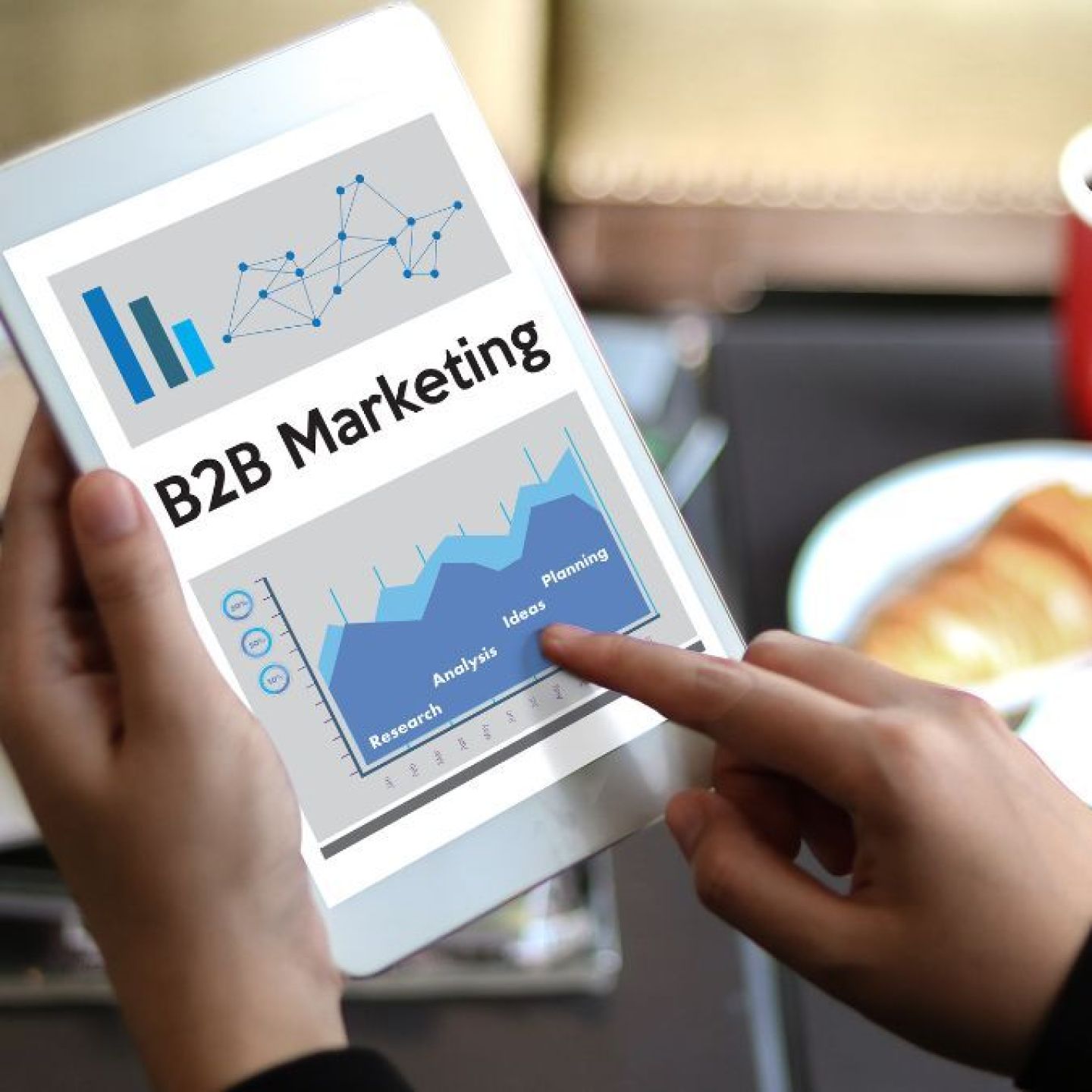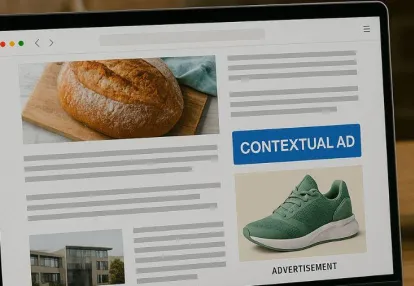
Our spy tools monitor millions of native ads from over 60+ countries and thousands of publishers.
Get StartedIn 2024, the B2B marketing landscape will continue to evolve, driven by technological advancements and changing consumer behaviors. Adapting to new strategies will be crucial for staying competitive and achieving business goals.
Key trends such as ethical data collection, AI-enhanced digital marketing, and emerging content marketing formats will shape the way businesses engage with their audience. Multi-channel approaches will ensure a broader reach, while accurate measurement and adaptability will drive continuous improvement.
This guide delves into:
Equip yourself with actionable insights to enhance your B2B marketing efforts and thrive in 2024.
The upcoming end of third-party cookies is a major change for B2B marketing strategies. This shift requires a move towards collecting data directly from customers, known as first-party data. Marketers will need to find new ways to gather valuable information while still respecting privacy and ethical standards.
Third-party cookies have been widely used to track how users behave online and customize marketing efforts accordingly. With the phase-out of these cookies, businesses won't be able to rely on third-party data as much anymore. This means they'll have to look for other ways to understand their customers and tailor their messaging.
In this context, there are two key opportunities:
As businesses strive to create meaningful interactions with their audience, first-party data collection becomes crucial:
Ethical data practices lie at the heart of these strategies. It's essential to ensure that all methods of collecting data are transparent, with clear opt-in mechanisms and privacy policies outlining how the information will be used.
Instead of simply gathering large amounts of information, it's important for businesses to focus on collecting data that drives meaningful results. Here are a few key tactics:
By prioritizing first-party data collection and following ethical practices, businesses not only comply with changing regulations but also build a trustworthy relationship with their audience. This approach leads to more accurate targeting and personalized marketing efforts, resulting in higher engagement and conversion rates overall.
Artificial Intelligence (AI) is changing the game for B2B marketing strategies by making campaigns more efficient and effective across different channels. By integrating AI tools into your marketing toolkit, you can take advantage of technological advancements in marketing to achieve better results.
AI-powered tools streamline processes, enabling you to:
Several platforms stand out for their innovative use of AI in ad creation and targeting:
Both platforms exemplify how AI can transform traditional marketing approaches into more dynamic and responsive strategies.
Embracing AI tools for marketing not only aligns with ethical data practices but also positions your business at the forefront of technological advancements. By leveraging these tools, you can create effective B2B strategies that adapt to the evolving digital landscape.
In 2024, content marketing remains a cornerstone of effective B2B strategies, driven by technological advancements in marketing and the necessity for first-party data collection. Ethical data practices are more crucial than ever, influencing how content is created and delivered. We will explore the following key trends in detail:
Podcasts have surged as a popular medium for sharing industry insights and thought leadership. They offer an engaging way to connect with your audience, allowing you to provide valuable information while showcasing your expertise. The conversational nature of podcasts makes them an ideal platform for discussing complex topics in an accessible format. For instance, companies can host weekly or monthly podcasts featuring interviews with industry leaders or deep dives into current trends.
Video content has become indispensable in B2B marketing strategies. Platforms like LinkedIn are perfect for leveraging short video clips that capture attention quickly and deliver impactful messages. Videos can be used to demonstrate product features, share customer testimonials, or provide educational content that addresses common pain points within your industry.
Key benefits of incorporating video into your strategy:
Practical tips for effective video content:
By embracing these content types—podcasts and videos—you can create a dynamic B2B marketing strategy that resonates with your audience and drives engagement.
Innovative channels are reshaping the landscape of effective B2B strategies. One platform that has recently gained traction in the B2B marketing arena is TikTok. Traditionally viewed as a consumer-centric app, TikTok is maturing into a viable platform for reaching B2B audiences, especially Gen Z professionals.
By integrating these innovative strategies into your marketing efforts, you can leverage new advertising opportunities on platforms like TikTok to reach and engage B2B audiences effectively.
In 2024, effective B2B strategies heavily rely on the power of online communities. These virtual spaces provide unmatched opportunities for establishing professional connections and enhancing brand authority.
Foster a sense of community and loyalty by creating a space for industry professionals to connect. This can be achieved through:
Technological advancements in marketing play a significant role in community engagement:
By focusing on online communities, brands can not only establish authority but also cultivate enduring professional relationships. This approach aligns seamlessly with other B2B marketing strategies discussed earlier, creating a comprehensive framework for success in 2024.
Key trends such as ethical data collection and AI-enhanced digital marketing support these community engagement efforts by providing the tools and methodologies needed for effective execution.
Creating compelling content that resonates with your target audience at different stages of their buyer journey is crucial. The buyer journey typically includes three main stages: awareness, consideration, and decision. Each stage demands tailored content to engage potential leads effectively.
During the awareness stage, potential customers are just becoming aware of their problem or need. Your goal here is to provide educational content that helps them understand their situation better. Here are some effective content strategies for this stage:
In the consideration stage, potential customers are actively researching solutions to their problem. This is where you need to showcase how your product or service can help them. Here are some content strategies that work well during this stage:
At the decision stage, potential customers are ready to make a choice. They may be comparing different options before finalizing their decision. Here are some content strategies that can help sway them in your favor:
Leveraging original data from customer stories and surveys can set your brand apart. Original data provides unique insights that can be used to craft highly relevant content.
Here are three ways you can leverage original data:
Incorporating these innovative strategies into your B2B marketing plan enhances lead generation by ensuring that every piece of content serves a purpose tailored to the buyer's journey while leveraging unique, original data to stand out in a crowded market.
Adopting a multi-channel marketing approach is essential in today's digital landscape. Engaging with your audience through various channels ensures you reach them where they're most active and receptive.
Utilizing multiple channels can significantly enhance your outreach efforts:
Combining these channels ensures a holistic strategy that maximizes touchpoints with potential clients.
Optimizing your website is crucial to support lead generation across all these channels. Here are some effective tactics:
Implementing a multi-channel approach combined with optimized web presence sets the foundation for effective lead generation and sustained engagement across various platforms.
Measuring marketing success requires a precise approach to ROI analysis. Utilizing the right tools and metrics ensures you can accurately evaluate your campaign performance. Here are essential strategies:
To inform future strategy adjustments, it's crucial to understand how different channels contribute to your goals:
Employing these tools and tracking these metrics helps refine your B2B marketing strategy in 2024, ensuring each campaign drives meaningful results.
Social media's role in B2B marketing is crucial, especially on platforms like LinkedIn. Using LinkedIn effectively can greatly improve your ability to connect with your target audience and drive conversions. Here are some tactics to consider:
Make sure your company page is complete with an engaging description, high-quality images, and relevant keywords. A well-optimized profile builds credibility and attracts potential clients.
Regularly share valuable content such as whitepapers, case studies, and industry news. This positions your brand as a thought leader and keeps your audience engaged.
Participate in or create LinkedIn Groups focused on your industry. These groups are excellent for networking, sharing insights, and establishing authority within your niche.
Utilize LinkedIn's sponsored content feature to reach a broader audience. Tailored ads targeting specific industries or job titles can enhance visibility and engagement.
Encourage employees to share company content on their personal profiles. This amplifies reach and adds a layer of authenticity to your marketing efforts.
Use LinkedIn's InMail feature for personalized outreach. Crafting messages that address the specific needs of potential clients can lead to meaningful conversations and opportunities.
By implementing these strategies, you can harness the power of social media to boost your B2B marketing efforts, making LinkedIn a cornerstone of your digital strategy.
Adapting to new data insights is critical for staying competitive in B2B marketing. As you measure campaign performance, flexibility allows you to make timely adjustments that enhance effectiveness. This adaptability ensures your strategy evolves based on real-time feedback, leading to better outcomes.
Employing analytics tools effectively is fundamental to tracking performance. These tools provide valuable metrics across various channels, enabling you to understand what works and what doesn’t. Key analytics platforms include:
Utilizing these tools helps you make data-driven decisions, optimize campaigns, and ultimately achieve your marketing goals.
Combining new technologies with traditional methods is essential for improving engagement and increasing conversions. Looking ahead to B2B marketing strategies in 2024, it is clear that there is a strong emphasis on integrating AI tools, ethical data collection practices, and multi-channel approaches with established techniques such as community engagement and personalized content.
Key Takeaways:
By adapting to these trends, you will position yourself as a leader in B2B marketing strategy in 2024, setting the stage for ongoing growth and success.
Receive top converting landing pages in your inbox every week from us.
How-To
Native ads can do more than drive clicks—they can build long-term brand loyalty. Learn how to use authentic storytelling, strategic placement, and audience targeting to strengthen trust during year-end campaigns. Discover how subtle, value-driven messaging keeps customers engaged beyond the holidays. Ideal for marketers aiming to turn seasonal buyers into loyal brand advocates.
Marcus Chen
7 minDec 15, 2025
Must Read
As third-party cookies fade away, contextual targeting is making a powerful comeback. Learn how to leverage native ads that align with user intent and content relevance to maintain high engagement and conversions. Discover modern tools and tactics that make cookie-free targeting both precise and scalable. Ideal for advertisers seeking privacy-friendly ways to drive performance in 2025 and beyond.
Liam O’Connor
7 minDec 9, 2025
Recently Updated
Native ads can make or break your holiday marketing success. Explore how to evaluate your recent campaigns and identify what worked—or what fell short—with native advertising. Learn key optimization tactics to boost engagement, strengthen audience trust, and increase conversions in future promotions. Ideal for marketers aiming to refine their ad strategies after the holiday rush.
Elena Morales
7 minDec 1, 2025




